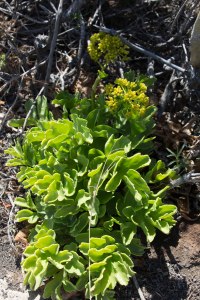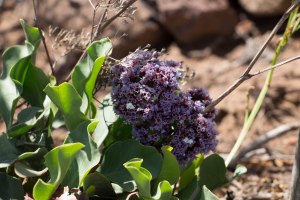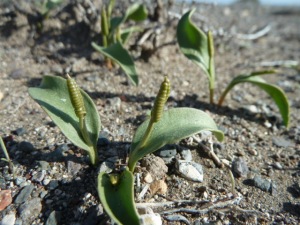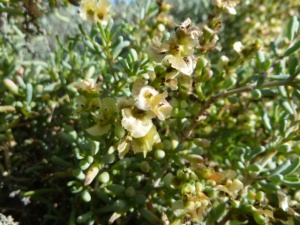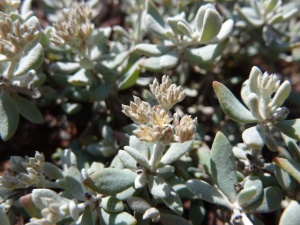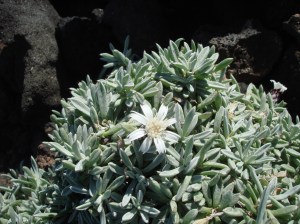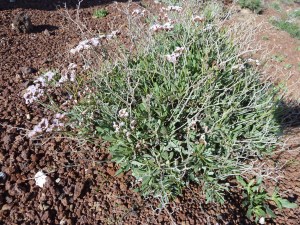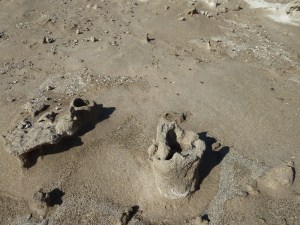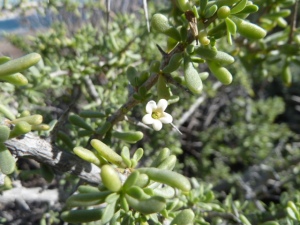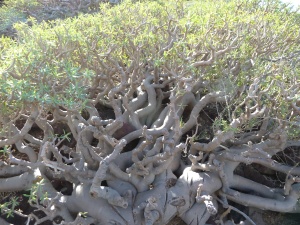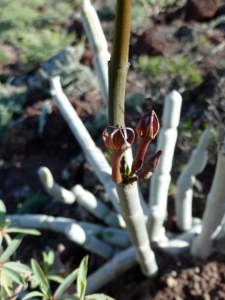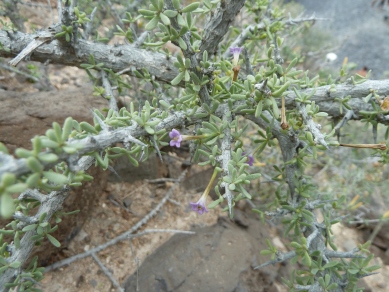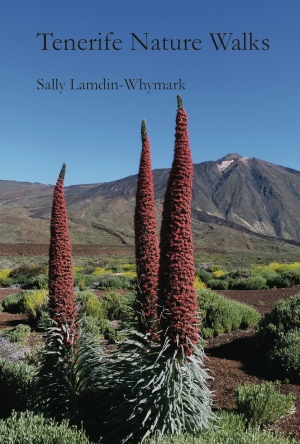Blog Archives
Punta de Teno botanical walk in May
The area around the Punta de Teno, also known as Teno Bajo, is a very special place botanically. It is also a bit difficult to get to as there are high cliffs on the north coast which blocked access to the low-lying land beyond, until tunnels were cut through the cliff. In July 2016 8 metres of the road in front of the cliffs collapsed suddenly into the sea, leaving 174 people, and their vehicles, trapped in Teno Bajo. The people were evacuated by helicopter, I’m not sure what happened to their cars! In January 2017 the repaired road was re-opened but with new rules. So now at weekends and holidays it is compulsory to take a bus to and from Teno Bajo. The buses run hourly from Buenavista del Norte and it costs just 1 Euro each way.
The advantage of a bus ride is that I can look out of the windows to see the plants on and at the base of the cliffs as we are driven past, and among those in flower in May when we went there was a rare knapweed relative endemic to Tenerife called in spanish Cabezón de El Fraile (the name of the cliff). Its latin name is Cheirolophus buchardii. The bus passed lots of them on the cliffs, but unfortunately I was unable to get a picture. On the cliffs also are dense clumps of the leafless spurge (Euphorbia aphylla), but again I’m sorry no picture.
We stayed on the bus right down to the beach near the lighthouse at the end of the road. We could have got off at an earlier bus stop if we had pressed the bell, but otherwise the bus does not stop. So we set off walking back towards the tunnel, wandering on the open scrubby coastal plain. There were plenty of flowers to be seen, some fairly common coastal species, such as the Cornical (Periploca laevigata), and Canary spurge (Euphorbia canariensis), and others less common such Dama (Parolinia intermedia) which is a Tenerife endemic which grows in abundance in relatively few areas.
There was a lot of Sea Lettuce (Astydamia latifolia) in a wide area, but the flowers of most were over, I just found one in flower under a Duraznillo (Cebollosia fruticosa).
Of the everlasting flowers (Limonium spp.), the pectinatum was absolutely in the right place, but the imbricatum was right next to the road, nearing the area of most human alteration, where the tomato growing area is. I rather think the imbricatum may have been planted.
As we passed the tomato plantation area, the coastal plain gradually disappears and the cliffs get closer to the coast. The slopes are covered with different plants from the plain, and hanging from the cliffs is the rare Tenerife endemic Tenerife Samphire (Vieraea laevigata) with its yellow daisy flowers.
We found we were at a bus stop, and decided we would return to Buenavista, so we hailed the bus. It had only been a brief visit and only a short stroll but had been a delight and I must make another visit next year in April or May to get a closer look, and better photos, of other exciting plants.
Coastal walk looking at some great endemic plants in flower

Neochamaelea pulverulenta, known locally as Leña buena (literally ‘good firewood’), a Canary endemic of dry coastal areas
I did this walk with an Irish walking group last Tuesday, 26th November. We had intended to do a walk elsewhere on the island, in the hills, but the weather was not promising, so we chose to walk on the coast. I was happy with this as there are plenty of flowers there at this time of year when there is not a great variety elsewhere.
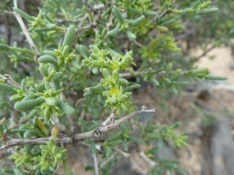
Gymnocarpus decandros (synonomous Gymnocarpus salsaloides ) is an unassuming little shrub about 50-60cm high (c 2ft), with stunning little greenish-yellow flowers at this time of year.
We set out from the little village of El Puertito, off the coastal road near Armeñime on the west coast of Tenerife. The village is on an inlet, with a small, safe, sandy beach between two rocky promontories. The walk starts from near the bar at the southern end of the beach. The path goes between the houses and the sea and then wanders up through other houses until it comes into the open beyond them. The path wanders past abandoned fields, up and down, and in and out, but always within sight of the sea, as it makes its way towards La Caleta, the next village to the south.
The landscape of the shore in this area is very picturesque with lots of inlets, and very varied geology. The rocks are almost all of volcanic origin, but are so different in appearance and colour. The main contrast being between dark grey/black lava flows overlain by a great depth of whitish pumice erupted in an explosive manner. The black rock is more resistant to the sea’s erosion and forms the basis of the rocky promontories, but the pumice erodes down to form sandy beaches in some of the inlets. There are also well cemented conglomerates with rocky breccia some of which have a terracotta red colour.

Astydamia latifolia, known locally as Lechuga del mar or ‘Sea lettuce’. These are not yet in flower, but will be soon, with showy yellow umbels
These varied rock types makes for a variety of habitats within a small area, and as the path approaches La Caleta the diversity of plants increases. Because of this most of the walk, only excepting the bit nearest El Puertito, is in a protected area called ‘Sitio de Interés Cientifico de La Caleta’ (Site of Special Scientific Interest (SSSI) La Caleta).
A selection of photos of some of the plants present is shown on this page. I hope you enjoy them, and as a result will look more closely at these remarkable plants if you are walking on the coast in the Canary Islands.

A view over the bay nearest to La Caleta, showing the contrasting black lava rock and the white pumice deposits
The walk is relatively gentle, although there are short stretches where the path is a bit rough underfoot, so good footwear is desirable.

A view of the plants typical of this coastal area, with the Canary Spurge (Euphorbia canariensis) or Cardón, in the foreground and a view to the mountains near Ifonche in the background

Asparagus arborescens, Tree asparagus, a Canary endemic which is a woody shrub in coastal areas like La Caleta
The length of the walk, both there and back, was just 5.8 km / 3.63 miles and took us less than 3 hours, including a break for lunch.





